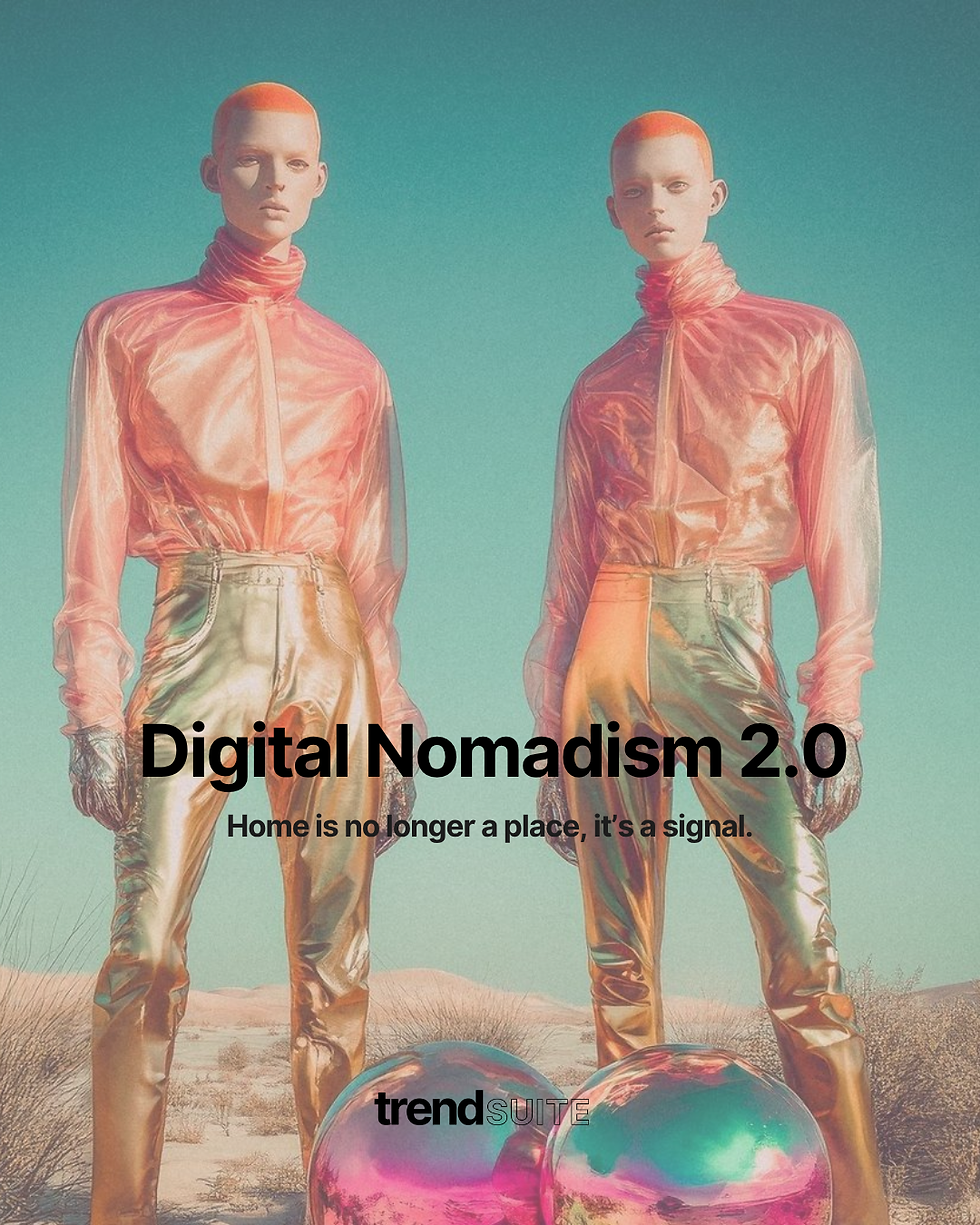Digital Nomadism 2.0: The New Geography of Belonging
- Nov 1
- 4 min read
How Digital Nomadism Redefines Home, Work, and Personal Identity in a Modern Hybrid Age
Home as a Signal, Not a Space
Home is no longer a fixed coordinate — it’s a living network.
In the era of Digital Nomadism 2.0, belonging travels at the speed of connection. Your home now moves with your Wi-Fi signal, your devices, your community, and your digital rhythm.
This generation no longer asks “Where do you live?” but “Where are you connected?”
Why has “home” become so fluid?
Because digital life has dissolved the boundaries between physical presence and emotional belonging.
As long as you’re connected, you’re anchored.
Geography becomes less about land and more about links — to people, platforms, and shared purpose.
The Hybrid Generation Redefines Geography
Today’s creatives, entrepreneurs, and thinkers are the first generation to live in constant motion — working, creating, and connecting across physical and digital worlds simultaneously.
Co-living hubs, metaverse studios, and flexible workspaces are replacing postcodes with possibilities.
Community, work, and identity are now mobile — measured by bandwidth, not brick.
What drives this shift toward mobility?
It’s emotional and existential.
The hybrid generation seeks freedom without fragmentation — they want movement that still feels meaningful.
Digital Nomadism 2.0 answers that desire by blending flexibility with familiarity — an evolving sense of home wherever purpose exists.
Identity on the Move
From metaverse avatars to travelwear designed for adaptive living, identity is becoming portable.
We curate versions of ourselves across time zones, devices, and digital spaces.
Belonging no longer requires a single location — it’s sustained by participation, visibility, and shared experience.
As the boundaries between offline and online dissolve, mobility becomes both lifestyle and language.
How does mobility reshape personal identity?
It makes it dynamic.
You are no longer one version of yourself — you are many, coexisting across physical and virtual worlds.
Identity becomes modular, designed to move.
The question isn’t “Where are you from?” — it’s “Where are you becoming?”
The New Luxury: Mobility and Meaning
In the past, luxury meant permanence — owning, settling, establishing.
Today, luxury is fluidity.
The ability to move freely, create remotely, and connect globally defines success for the hybrid consumer.
Travelwear, remote lifestyle brands, and adaptive design now sit at the centre of cultural relevance — catering to those who live between worlds.
Mobility is no longer escape; it’s expansion.
What do brands need to understand about this new nomadic mindset?
They must design for motion, not location.
Products should travel well — physically and emotionally.
Experiences must adapt across devices, destinations, and data streams.
The new consumer doesn’t just want function — they want fluid belonging.
From Connectivity to Community
In Digital Nomadism 2.0, connection is not just technological — it’s emotional.
The Wi-Fi signal becomes a symbol of presence, not dependence.
Communities form through shared bandwidth, co-working rituals, and nomadic values: autonomy, adaptability, and authenticity.
These are the new cultural coordinates — belonging defined by alignment, not address.
Is this a rejection of stability?
Not entirely. It’s a redefinition.
Stability no longer means staying still — it means staying connected.
For the hybrid generation, continuity is digital.
What once was anchored in place is now preserved through purpose.
The Future of Work, Travel and Design
The next evolution of nomadism blends ethics with aesthetics.
It’s about designing systems that move with us — modular wardrobes, sustainable travel tech, adaptive housing, and responsive workspaces.
As AI and mixed reality merge with daily life, mobility becomes an emotional architecture — shaping how we think, feel, and relate.
What’s next for the mobile-first future?
Expect a shift from minimalism to modularism — design that expands, collapses, and regenerates as we do.
The future isn’t about reducing; it’s about reconfiguring. Home, work, and identity will no longer be separate — they’ll synchronize.
TrendSuite Insight | Why Digital Nomadism 2.0 Defines the Hybrid Era
At TrendSuite, we see Digital Nomadism 2.0 as more than a lifestyle trend — it’s a blueprint for adaptive living.
This shift signals the fusion of movement and meaning, technology and touch, solitude and connection.
Brands that understand this won’t just follow consumers across platforms — they’ll travel with them, shaping experiences that feel anchored in an unanchored world.
Because in the future, identity won’t stay put.
It will travel — at the speed of Wi-Fi.
Innovator Elite Membership
Forget the noise. Forget the endless scroll of what's trending now.
Innovator Elite isn't about keeping up - it's about seeing further.
Our global community of 3,000+ designers, innovators and brands access tomorrow's ideas before they break, turning creative intuition into clarity and confidence.
Be the brand that others study, emulate and admire.
Create with intent. Move with precision. Lead the shift.








